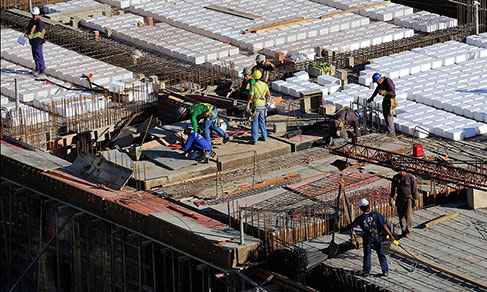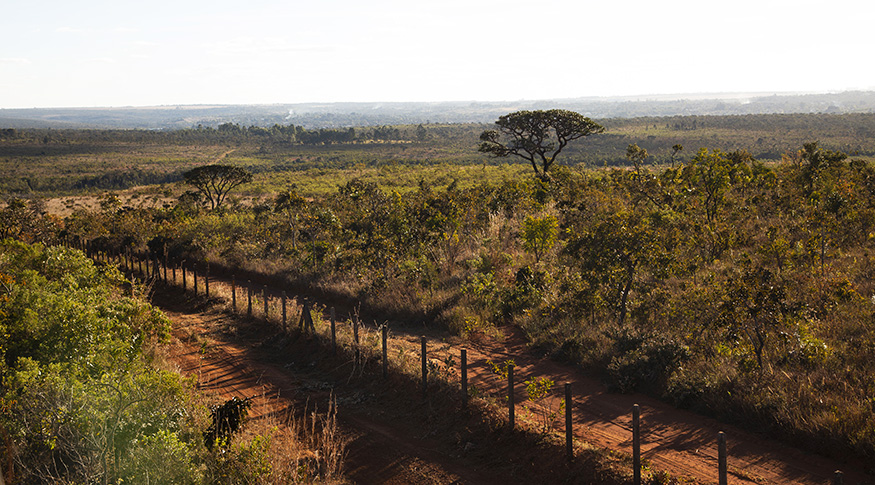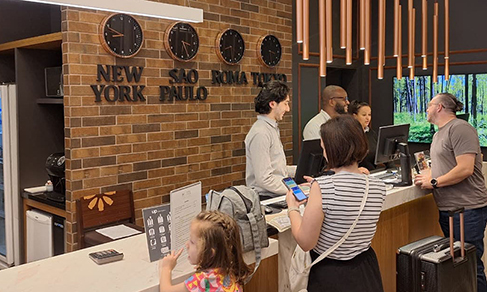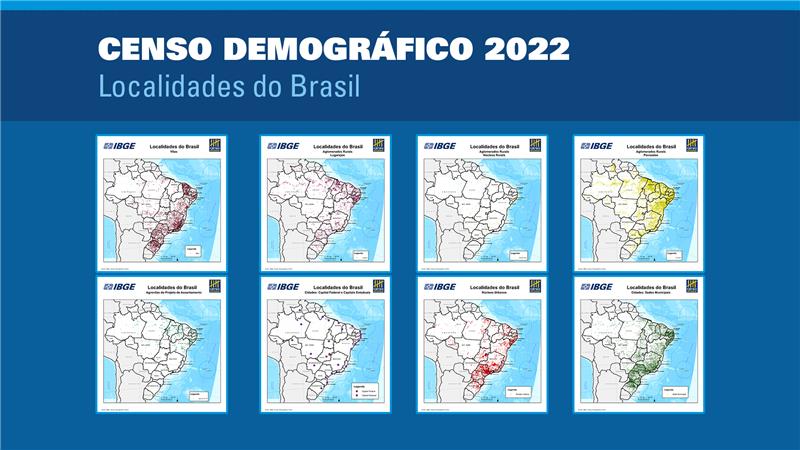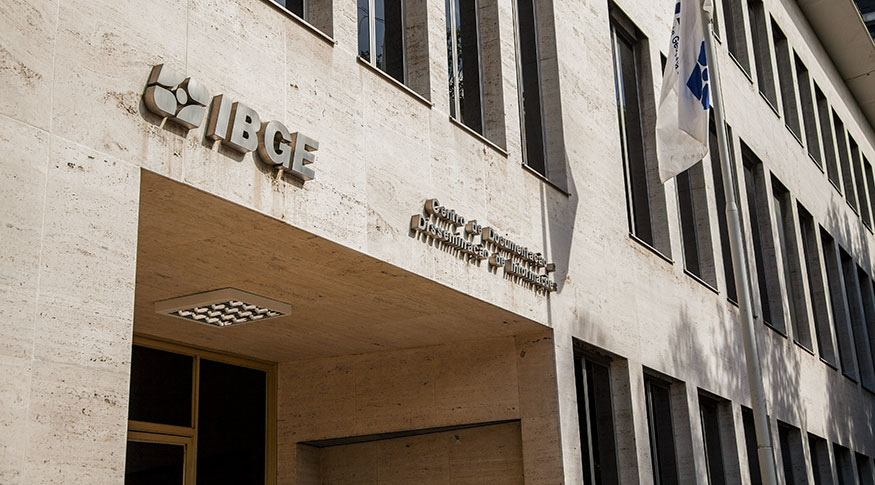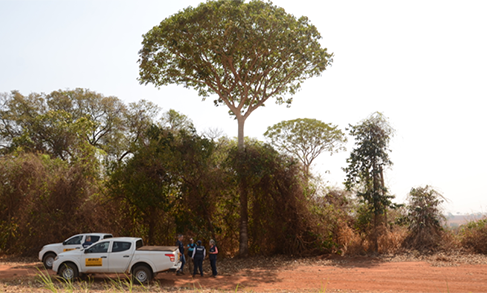2022 Census
2022 Census: self-reported brown population is the majority in Brazil for the first time
December 22, 2023 10h00 AM | Last Updated: January 19, 2024 08h49 PM
Highlights
- In 2022, approximately 92.1 million persons (or 45.3% of the country’s population) reported being brown. It was when that group became predominant for the first time since 1991.
- Other 88.2 million (43.5%) reported being white, 20.6 million (10.2%), black, 1.7 million (0.8%), indigenous and 850.1 thousand (0.4%), Asian.
- The North Region had the biggest percentage of brown persons (67.2%), and the South, the biggest percentage of white ones (72.6%) and the Northeast recorded the biggest percentage of black persons in their population (13.0%).
- In 2022, 35.7% of the brown persons and 48.0% of the white ones in the country were in the Southeast.
- Among the states, the biggest percentage of brown persons was in Pará (69.9%), of white persons, in Rio Grande do Sul (78.4%) and of black persons, in (22.4%).
- The brown population was the majority in 3,245 municipalities in the country (or 58.3% of the total), whereas the indigenous population was the majority in 33 municipalities, and the black population, in nine other.
- Between 2010 and 2022, the black, indigenous and brown population increased their participation in all the age brackets, whereas the white and Asian population reduced theirs.
- In 2022, the brown population was predominant up to 44 years of age: from 45 on, the white population had the biggest percentage.
- The Asian population has the oldest median age in 2022 (44 ), followed by the white population (37), the blacks (36), browns (32) and indigenous (25 years of age).
- The highest aging index was that of the Asian population *265.5), followed by the black ones (108.3), white population (98.0), brown (60.6) and indigenous population (35.6).
- The black population had the highest sex ratio (103.9 men for every 100 women) and it was the only one in which the number of men exceeded that of women.
- The Asian population had the lowest sex ratio among the five groups of color or race: 89.2 men for every 100 women
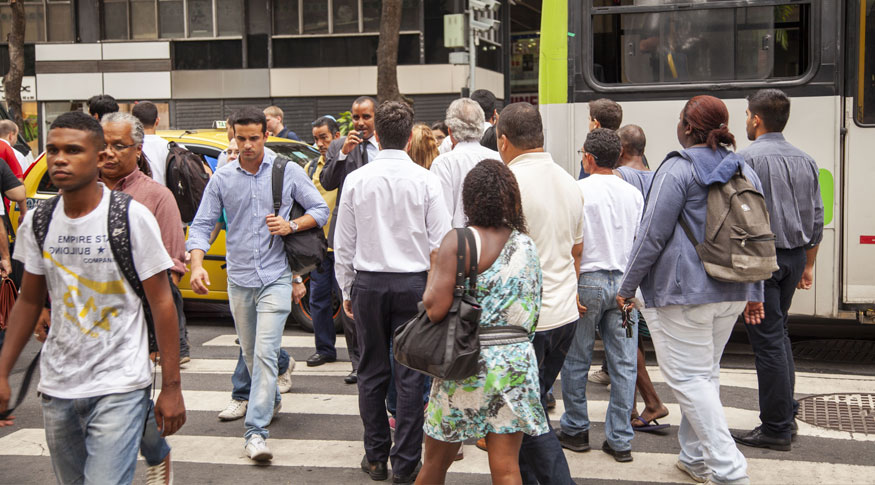
In 2022, about 92.1 million persons reported being brown, which corresponds to 45.3% of the country’s population. Since 1991, this total had not exceeded the white population, which amounted to 88.2 million (or 4.,5% of the population in Brazil). Other 20.6 million persons reported being black (10.2%), whereas 1.7 million reported being indigenous (0.8%) and 850.1 thousand, Asian (0.4%). These data come from the 2022 Population Census: Ethnic-racial identification of the population by sex and age. Results of the universe, released today by the IBGE.
“The population census is the only survey that allows a deeper look all color or race categories and their evolution over the decades. It shows the diversity of our population,” explains Marta Antunes, coordinator for the Census of Traditional Peoples and Communities.
From 2010, the balck population grew by 42.3% and its proportion in the total population went from 7.6% to 10.2%. The brown population increased by 11.9% and its proportion in the country’s population rose from 43.1% to 45.3%. There was also an increase of 89% of the indigenous population, whose participation changed from 0.5% to 0.8%.
“Since the 1991 Population Census, we have observed changes in the percent dist ribution by color or race, resulting from the expansion of reports of brown, black and indigenous color or race, and a reduction of reports of the white population,” says Leonardo Athias, IBGE analyst.
ribution by color or race, resulting from the expansion of reports of brown, black and indigenous color or race, and a reduction of reports of the white population,” says Leonardo Athias, IBGE analyst.
The share of the white population dropped from 47.7% in 2020 to 43.5%, in 2022. The Asian population faced a significant decrease (-59.2%) and its share fell from 1.1% to 0.4%, having gotten back to levels of 1991 and 2000.
The decrease of the Asian population is related to a procedure adopted in the 2022 Census: in case the interviwee reported being or indicated any resident as Asian, the enumerator should ask an additional standard question: “a person is of Asian color or race when they are of eastern origin: Japanese, Chinsese, Korean. Do you confirm your choice?” Mr. Athias believes the new procedure added to this “drastic change” in the proportion of self-reported Asian persons.
“The changes in percentages of categories of color or race have a multidimensional nature,” he adds. “Many factors account for these changes. Demographic, migration, identification, livig conditions, services, among other ones.”
Brown, white and black persons are predominant, respectively, in the North, South and Northeast Regions
The brown population was the group with the highest percentage in the resident population of the North Region (67.2%). The Northeast (59.6%) and Central West (52.4%) recorded figures above the national average. The percentages in the South (21.7%) and Southeast (38.7%) were below average.
The South Region had the biggest percentage of white persons (72.6%). In the Southeast, the percentage was 49.9%. In the Central West (37.0%), Northeast (2.,7%) and North (20.7%) Regions, the percentages were below the national average.
The Northeast had the biggest percentage of black persons (13.0%), followed by the Southeast (10.6%), the Central West (9.1%) the North (8.8%) and the South (5.0%).
The Southeast had the highest proportion of Asian persons (0.7%). Both the South and the Central West equalled the national average (0.4%) The Northeast (0.1%) and the North had the same proportions.
The proportions of indigenous population in the North (4.3%), Northeast (1.0%) and Central West (1.2%) exceeded the national average. The Southeast (0.1%) and the South (0.3%) had the lowest percentages.

Pará had the biggest percentage of brown persons (69,9%)
Pará had the highest proportion of brown population (69.9%), followed by Amazonas (68.8%) and Maranhão (66.4%). The three states with the lowest percentages, on the other hand, were Rio Grande do Sul (14.7%), Santa Catarina (19.2%) and Paraná (30.1%).
The highest percentages of the white population were in Rio Grande do Sul (78.4%), Santa Catarina (76.3%) and Paraná (64.6%). The lowest percentages, on the other hand, were located in Amazonas (18.4%), Pará (19.3%) and Bahia (19.6%).
Bahia (22.4%) had the highest proportion of black population, with Rio de Janeiro (16.2%) and Tocantins (13.2%), in the second and third positions, respectively. The lowest percentages were those of Santa Catarina (4.1%) Paraná (4.2%) and Amazonas (4.9%).
The highest percentages of the Asian population were in São Paulo (1.2%), Paraná (0.9%) and Mato Grosso do Sul (0.7%). Most federation Unit had less than 0.2% of Asian persons, among which Rio Grande do Sul and Piauí, with 0.07% and 0.09%, stood out.
The three Federation Units with the highest share of indigenous peoples were Roraima (15.4%), Amazonas (12.5%) and Mato Grosso do Sul (4.2%). On the other hand, the lowest proportions were those of Rio de Janeiro and São Paulo, both with 0.1% of indigenous persons.
In 2022, brown persons were the majority in 58.3% of the municipalities
The 2022 Census also shows the predominant color or race category for each municipality in Brazil. The brown population was the majority in 3,245 municipalities, or 58.3% of the total municipalities in the country. More than half of those municipalities (53.0% or 1,720) are located in the Northeast.
Minas Gerais has the biggest number of municipalities (404) where persons who reported being brown made up more than 50% of the resident population. The ranking is completed by Bahia (385), followed by Piauí (219), Maranhão (214) and Paraíba (202).
The municipality with the highest percentage of brown persons is Boa Vista do Ramos (AM) with 92.7%, followed by São João da Ponta (PA), with 87.4%, and Tracuateua (PA), also with 87.4% of brown persons. The ten municipalities with the highest proportion of brown persons were Amazonas, Pará and Maranhão.
The white population was the majority in 2,283 municipalities (or 41% of the total), being half of those municipalities (or 1,143) in the South and 45.7% (or 1,044) in the Southeast. The North Region did not have any municipality with mostly white persons in the resident population.
The three municipalities with the highest proportions of white persons were Morrinhos do Sul (RS), with 97.4%, Forquetinha (RS), with 97.2% and Monte Belo do Sul (RS), with 96.2%.
Indigenous persons were the majority in 33 municipalities, with 18 in the North (54.5%), five in the Northeast and in the central West (15.2% each), four in the South (12.1%) and one in the Southeast (3.0%).

The three municipalities with the biggest number of indigenous persons were Manaus (AM), with 71.6 thousand, São Gabriel da Cachoeira (AM), with 48.2 thousand and Tabatinga (AM), with 34.4 thousand. The lowest proportions were those of Uiramutã (RR), 96.6%, Santa Isabel do Rio Negro (AM), 96.2%, and São Gabriel da Cachoeira (AM), 93.2%.
In nine municipalities, all of them located in the Northeast region, the black population was the majority. Eight of those municipalities were in Bahia (Antônio Cardoso, Cachoeira, Conceição da Feira, Ouriçangas, Pedrão, Santo Amaro, São Francisco do Conde e São Gonçalo dos Campos) and one, in Maranhão (Serrano do Maranhão).
The municipality of São Paulo had the biggest number of black persons (1.16 million), followed by Rio de Janeiro (968 thousand) and Salvador (825 thousand). The municipalities with the highest proportions of black persons were Serrano do Maranhão (MA), with 58.5%, Antônio Cardoso (BA), with 55.1% and Ouriçangas (BA), with 52.8%.
The Asian population was not the majority in any municipality and the highest proportions were those in Assaí (PR), with 11.5%, Bastos (SP), with 10.3% and Uraí (PR), with 5.9%. In 575 municipalities in Brazil none of the residents reported being Asian.
Indigenous, black and brown persons expand their participation in the Legal Amazon population
Considering the Legal Amazon, 65.2% (17,373,150) of the 26,650,798 resident persons reported being brown; 22.3, (5,952,829), white; 9.9% (2,625,999), black; 3.3% (868.419), indigenous and 0.2% (45,801), Asian.
Whereas the population of the Legal Amazon grew by 9.3% between 2010 and 2022, the indigenous population in the area increased by 100.7% in the period. The black population grew by 43.3% and the brown population, by 10.1%.
Groups of color or race show demographic differences
The demographic structure of Brazil changed from 2010 to 2022, with people aging and an increase in the proportion of women.
All the ethnic racial groups face an aging process, at varied paces, which are reflected in their current structure of sex and age. The white and brown population is the one presenting age pyramids closer to the resident population in Brazil, but with an older white population and a younger brown population.
“There are a number of demographic and ethnic-racial criteria that can account for this different behavior of popualtion groups. That is, there can be more migration, more or less fertility, more mortality. these data can be dealt with in coming releases. But the ethnic-racial belonging criteria for the population vary in accordance with the social context and interracial relationships, and depending on the way people see themselves.”
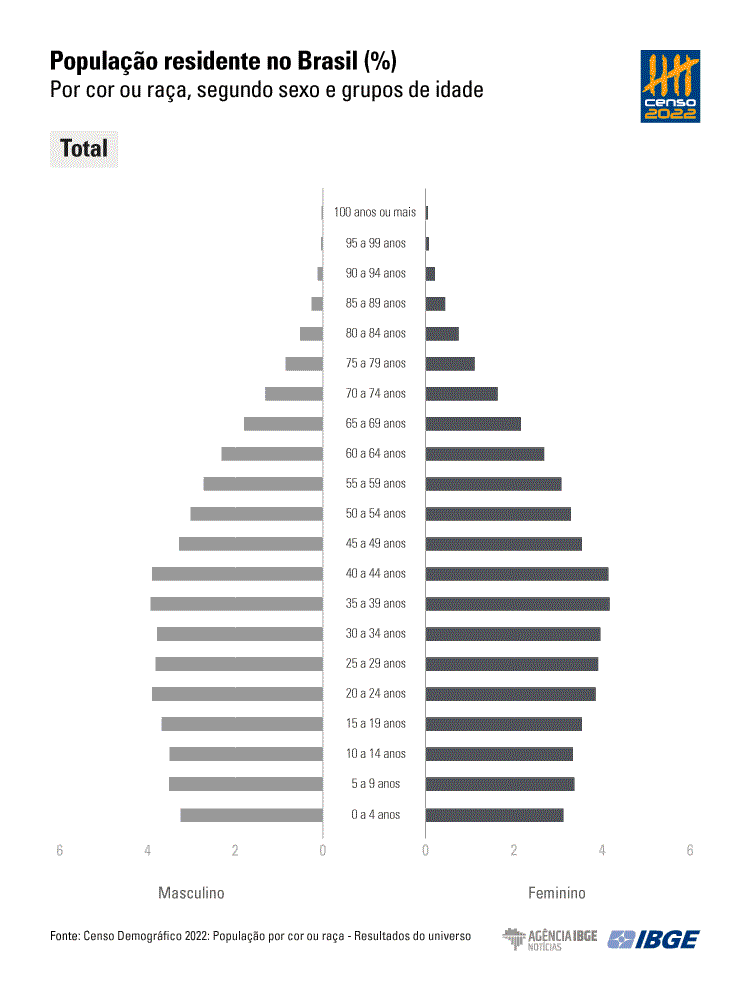
The white population pyramid has a sex and age standard that is close to that of the Brazilian population, with an older and more female profile. The pyramid for the black population has a lower proportion of chukdren aged up to 14 in comparison with the total population and a higher relative proportion of men aged 20 to 64 in relation to black women and in relation to the total population.
The pyramid for the brown population is the one closer to the Brazilian population, since it has the biggest number of persons, but with more children, youths and adults aged up to 34 years of age, in comparison with the total. The pyramid for the brown population is the one closer to the Brazilian population, since it has the biggest number of persons, but with more children, youths and adults aged up to 34 years of age, in comparison with the total.
The pyramid for the indigenous population shows a wide base with progressive narrowing, a higher proportion of the population aged 0 to 4 and progressive retreat, more pronounced for men and women aged 25 to 29 in comparison with the previous group (20 to 24 years of age).
Black and brown population increase participation in all age brackets
Between 2010 and 2022, by age groups, both the black and the brown population increased their participation among persons in all age brackets. The indigenous population had a similar behavior, having remained stable only in the grouo aged 60-74. The white and Asian population recorded decreases in all the age groups.
In 2022, there was a predominance of the brown population up to 44 years of age; from 45 on, the white population has the highest percentage. From 2010, the white population is no longer predominant in the group aged 30-44, which started to have a majority of brown persons in 2022.
The biggest percentages of brown persons were of persons aged 0 to 14 (49.3%) and 15 to 29 (48.7%); the lowest proportions were in the groups aged 60-74 (38.6%) and over 75 (33.8%). As for the white population, the biggest percentage was in the group aged 75 and over (55.6%) and the smallest in the group aged 15 to 29 (39.4%).
The black population had its highest proportion in the group aged 30-44 (11.4%) and the lowest proportion among persons aged 0 to 14 (7.3%). Indigenous persons have the biggest percentage among persons aged 0 to 14 (1.0%) and smallest percentage among persons aged 60-64 (0.3%). The highest proportion of Asian persons was located in the group aged 75 and over (1.1%) and the lowest, among those aged 0-14 (0.2%).
Population aging is observed in all categories of color or race
The 2022 Census data allow the analysis of the age profile of each category. “We have witnessed the aging process of the resident population between 2010 and 2022. In specific populations, this aging process is observed in all the ethinc racial groups, with a growing participation of groups aged 30 and over and a decreasing presence of groups aged up to 29,” remarks the coordinator Marta Antunes.
The Asian population is the group with the highest share of the population aged 60 and over, with about 29% of persons, and also the group with the lowest percnetage of persons aged 0-14 (11.3%).
Black population has 103.9 men for every 100 women
The 2022 Census also presents indicators of median age, aging index and sex ratio by color or race. In Brazil, the sex ratio, which shows the proportion of men per group of 100 women, was 94.2 for the total population, which indicates there are more women than men in Brazil.
The black population had the highest sex ratio (103.9), being the only one with a bigger number of men than women, followed by the indigenous (97.1), brown (96,4), white (89.9) and Asian (89.2) population. In the North Region, the sex ratio of the black population reached 122.1, the highest figure. The lowest one was that of the Asian population in the Northeast Region, 73.8.
The median age separates the youngest half of the population from the oldest half. From 2010 to 2022, the median age went from 29 to 35 years of age, thus evidencing population aging. The Asian population recorded the highest median age in 2022, 44 years of age, being followed by the white population (37 years of age), the black population (36 years of age), the brown population (32 years of age) and the indigenous population (25 years of age), including, in this case,, persons who reported their identity by answering the question “do you consider yourself an indigenous person”.
The aging index, represented by the number of persons aged 60 and over per group of 100 persons up to 14 years of age, was 80.0. That indicates there were 80 persons aged 60 and over for every 100 persons aged up to 14 in 2022. The higher the indicator, the older the population.
In 2022, the Asian population recorded the highest aging index (256.5), followed by the black (108.3) and the white (98.0) populations. The lowest aging indexes were recorded by the brown (60.6) and the indigenous population (35.6). The latter answered the question “do you consider yourself an indigenous person.” All the groups recorded increases in the aging index against 2010.
More about the survey
The Population Census is the main source of information about living conditions of the population in all the municipalities in the country and in its internal subdivisions. The results of the universe for the population by ethnic-racial identification, by sex and age, of the 2022 Population Census, present the distribution of the resident population in the country by age groups and sex, besides some indicators obtained from these data, such as the median age, the aging index and the sex ratio for Brazil, Major Regions, Federation Units, urban concentrations and municipalities and for the legal Amazon.


